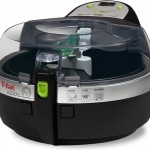I have been economically stimulated, so I did what I’ve been meaning to do for forever- I opened an ING savings account, created an account named “Emergency” and stuck half that stimulus check in it. Unfortunately, right now the interest is only 3% on the amount I’ve transferred, but 3% is way better than nothing.
Setting up the account was really easy, shockingly so. I’m so happy to have that emergency fund money out of my checking account, so that there is no temptation to spend it- out of sight, out of mind.
The best part about ING, besides not having to wait in line, is the ability to set up several savings sub-accounts in one spot and authorize automatic deposits.
For instance:
Last year I started up a system of saving for Christmas, where I would take $20 each week and stick it in an envelope. Then when I went Christmas shopping, I knew exactly how much I could afford to spend and how much I had left. It made Christmas shopping a much easier process, and since I paid cash, there was no post-Christmas depression to deal with when the credit card bill rolled in.
The downside to the envelope system is that whenever my husband runs out of cash, he will borrow from the Christmas money. This is a royal pain because I now have to figure out weekly how much I have to “pay back”, plus I have a heart attack every time I open that envelope and money is missing. Also, after being robbed last year, I have become nervous about having cash in the house, no matter how clever I think the hiding place is.
So along with the emergency fund account, I’ve opened a Christmas savings account. I transferred the amount that I have so far in my envelope, and set it up to automatically withdraw $20 a week from checking. It can sit safely until December, plus accrue interest. Bonus!
Other sub-accounts I plan to set up:
- An account for saving toward this coming winter’s oil bill. I think we can only assume energy and oil costs will continue to rise, and I hate that horrible feeling of dread when the oil man comes to fill our tank, knowing a bill for $400+ dollars will be arriving soon thereafter. Our electric bill peaked at $192.22 this winter, for simplicity’s sake I’ll round up to $200; my lowest so far was $102.30 and I know I can do better. So what I’ll do is assume an average of $150 a month on electric and work that into my budget. If the bill is less than $150, I’ll take the difference and transfer it into my designated ING account for oil. Even if it’s not enough to cover that bill entirely, it’ll take some of the sting out of writing the huge check.
- Saving towards a new (or new to us) car for my husband. It’s nearly a decade old and was flooded out a few years back. I don’t think we’d miss another 10 or 15 dollars a week, plus in less than a year my minivan will be paid off, and we can redirect that $275 a month payment into this savings account. Then whenever his car dies, or when it needs a repair that costs more than we want to sink into the thing, we’ll have some money already set aside for a down payment (and with any luck the car payments won’t amount to more than the $275 already earmarked for car payments). But golly, I wish we could make the car payments stop entirely and put that money towards retirement funds! Does it ever end?
- Finally, my middle child, a saver by nature, has over $100 dollars in a savings account at Commerce Bank, where it is accruing a sad 0.25% interest. So we’ll close that out and put the monies into a sub-account in my name, but designated as “Maverick’s Savings Account“. Maybe seeing firsthand how compounding interest works will inspire his brother to start saving his allowance as well.
Naturally these accounts are in addition to the funds being put into my husband’s 401(k) and 529 accounts.
I’m no financial wizard by any means. Could not be farther from it. If anything I’ve only just begun to really look at the big picture of where our money goes and where it needs to go, and I am sensing that I should have done this a decade ago. My guess is that I’m not alone in this, and that is why I’m taking time to go off-subject and share what I’m doing.
I will tell you, though, that setting these types of savings in motion makes for a lot less general worry about money. Less worry means more energy for the good stuff.
Incidentally, since I’ve opened the account, I now have referral codes for customers opening new checking or savings accounts. (The checking account is also interest bearing, but at a lower rate.) ING will deposit $25 into your account if you use a referral code, open with a deposit of at least $250 and leave it there for 30 days. Let me know if you’d like a referral code.
(FYI, these are the personal finance blogs that inspired me to take control of our budget.)
Trent at The Simple Dollar will walk you through exactly how to set up subaccounts at ING. It’s really easy, but just in case you want to see how it’s done beforehand.
Compare interest rates for online savings accounts at Get Rich Slowly. ING is not the only game in town, just the one I happen to have ( a few hours) experience with.
And you? Any handy family savings tips?











Leave a Reply